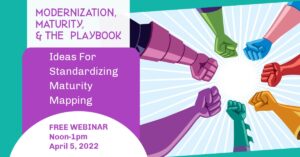
By Beth Schaefer
While I have enjoyed confessing to being a curmudgeon (Part 1) and writing about the benefits of having a curmudgeon on your team (Part 2), even I need to admit, curmudgeonly behaviors have their limits.
Yes, you can have too much of a good thing. IPD does quite a bit of training with the CliftonStregnths® philosophy which also promotes that any strength used too much and too often can become a weakness, and the curmudgeon benefits are no exception to that rule.
Grumpy Staying
Long-term ongoing anger is not great.
When researching, I noted that the new phrase for this is Grumpy Staying. Apparently, none of us like coworkers who are grumpy 100% of the time. (Noted.) In addition to being disliked, your grumpiness loses its super power of extra energy if you are in a constant state of grumpiness. According to research, there is the short burst of adrenalin that propels us to press on in challenging circumstances, and that burst of adrenaline is lost if we are just mad all the time. If you are mad at work all the time, you may want to revisit the blog series on The Great Resignation.
In addition, if you are grumpy all the time, people will not like working with you, and then they will not help you when you need it. I am sure some of you more dedicated grumpy people are saying you do not care if you are liked or that you do not need anyone else’s help to do your job. I do not believe that is true. At some point, you need HR to rush a vacation request or IT to update your computer or for someone in your department to respond to your customers while you are out of the office, so you need to make some effort to build good will with others by taming your grumpiness.
If you are having trouble balancing your grumpiness with happiness, take time at the beginning and end of each work day to think of a “positive nugget.”
Positive Nuggets
This is a strategy that I have used to manage up when I meet with my direct supervisors. Even if the meeting is addressing lots of barriers, constraints, and problems, I try to end the meeting on a positive note with the positive nugget. I find 1, 2, maybe even 3 nuggets (small morsels) to be share about good things taking place in my department so that I leave my supervisor with the impression that despite all the challenges, good things are happening.
Some positive nugget examples are:
- Sharing how well a team member is performing
- A positive comment shared by a client
- Describing how someone from another department went out of their way to help
- Explaining how your risk mitigation plan caught a big problem sooner rather than later
Positive nuggets do not need to be about the meeting of a goal or benchmark, but it is something positive that makes the working environment more pleasant. Positive nuggets themselves do not solve problems, but they can reframe your outlook to take the edge off your grumpiness.
Curmudgeons – go forth and use your grumpiness to improve the workplace, but also be sure to sprinkle some positive nuggets into your day.
Series Resources
























